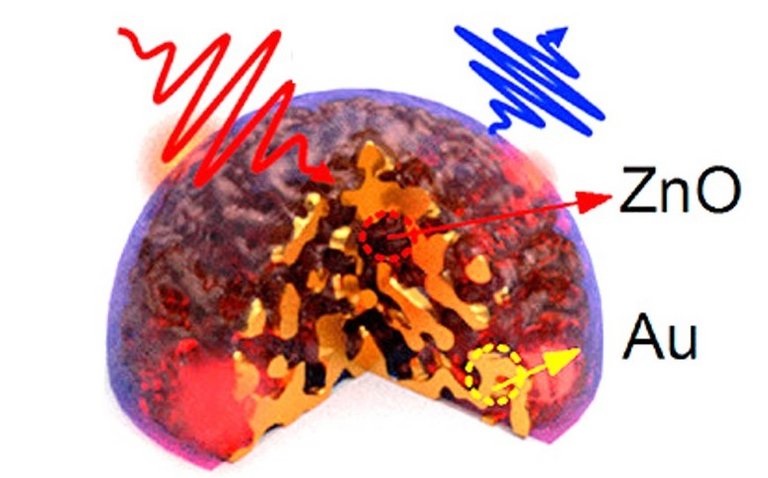Tiny particles composed of metals and semiconductors could serve as light sources in components of future optical computers because they extremely concentrate and amplify incident laser light. How this process works has now been elucidated for the first time by a transnational team of researchers from Carl von Ossietzky University Oldenburg, TU Ilmenau and Lund University, Sweden.

For their study, the physicists produced nanomaterials that combine the optical properties of metals and semiconductors. The starting point of the study was sponge-like particles of gold with a diameter of a few hundred billionths of a meter (nanometer) and pores with a size of about ten nanometers. The materials scientists Dr. Dong Wang and Prof. Peter Schaaf from the TU Ilmenau produced these metal sponges and developed a process to coat them with a thin layer of the semiconductor zinc oxide. In the process, the material also penetrates into the tiny pores.
To elucidate how the nanomaterials convert light of one color into another, team members led by Prof. Dr. Anne L'Huillier and Prof. Dr. Anders Mikkelsen from Lund University used a special microscopic technique called ultrafast photoemission electron microscopy. Using extremely short light flashes, they were able to demonstrate that light is indeed efficiently concentrated in the nanopores - an important prerequisite for future applications.
The researchers from the Group for Theoretical Physics I at TU Ilmenau, led by Prof. Erich Runge, additionally simulated the properties of the material using theoretical models. As the team reports, nanoparticles composed of metals and semiconductors probably offer new possibilities to adjust the properties of the emitted light as desired. The study thus provides fundamental new insights into how hybrid metal-semiconductor nanostructures amplify light. Furthermore, the observations could help to develop materials with even better optical properties.
Contact
Prof. Erich Runge
Head Group for Theoretical Physics I

